Punakha Drubchen
Introduction on Punakha Drubchen Tshechu/ Festival
Tshechu (meaning “tenth day”) festivities are celebrated annually in monasteries, dzongs, and temples all over Bhutan. It is a religious festival honoring the birth of Guru Padmasambhava, a Buddhist master from the eighth century, on the tenth day of the lunar calendar’s month.
Tshechu is not just a party. It is a sequence of religious rituals designed to make people happy while also encouraging them to develop a more enlightened outlook on life. However, Drupchen like Punakha Drupchen or Thimphu Drupchen are celebrated prior to the Punakha Tshechus or Thimphu Tshechu.
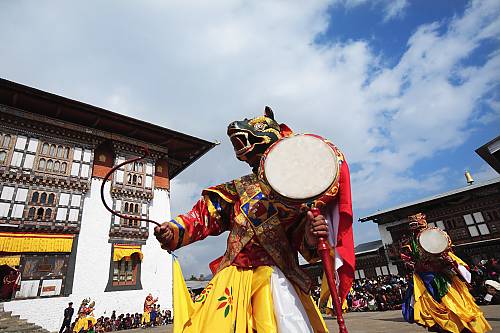
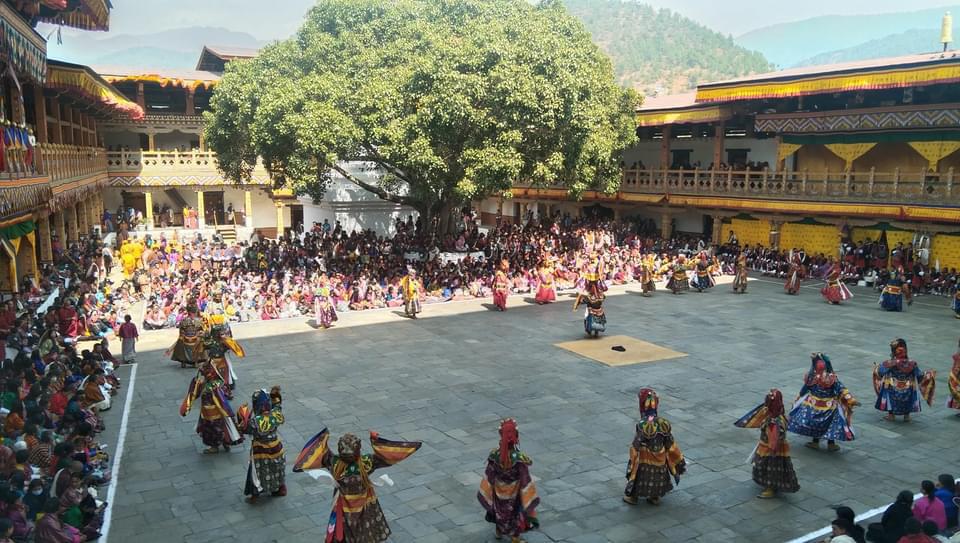
Punakha Drubchen / Dromche
Punakha Drubchen which is alternatively called as Punakha Dromche comes before the Punakha Tshechu . The performances, mask dances, are inspired by actual historical events. Punakha Dromche tells the story of the Pazaps and Bhutan’s victory over the Tibetans.
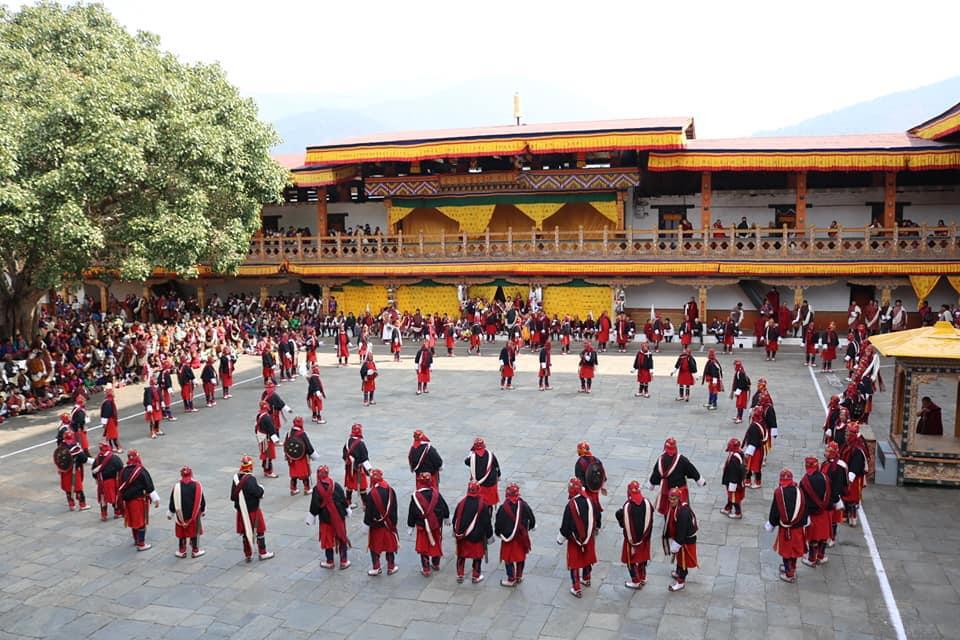
Pazaps
Warriors serving under Zhabdrung Zgawang Namgyel are known as Pazaps. They are the Wang Tshochengye, one of the eight great clans inside the Thimphu and Punakha regions. And they wear red and black dress to symbolize Zhabdrung troops. The Pazaps can only be played by residents of Wang Tshochenye.
Background 0n Punakha Drubchen
The Drupchen revives a centuries-old ritual by depicting a play about a band of warriors setting out for battle. The Punakha Drupchen is enacted annually on the 24th day of the 12th month, the 9th day of the 1st month in Bhutanese calendar.
This date corresponds to the end of February or the beginning of March. The celebration honors Zhabdrung Ngawang Namgyel and his successful revolt against the invading Tibetans. The reenactment of a battle scene from the 17th century, when Tibetant forces invaded Bhutan in search of the sacred relic Rangjung Kharsarpani. The climax of the celebration on the final day of the Drupchen.
Enactment at Punakha Drubchen
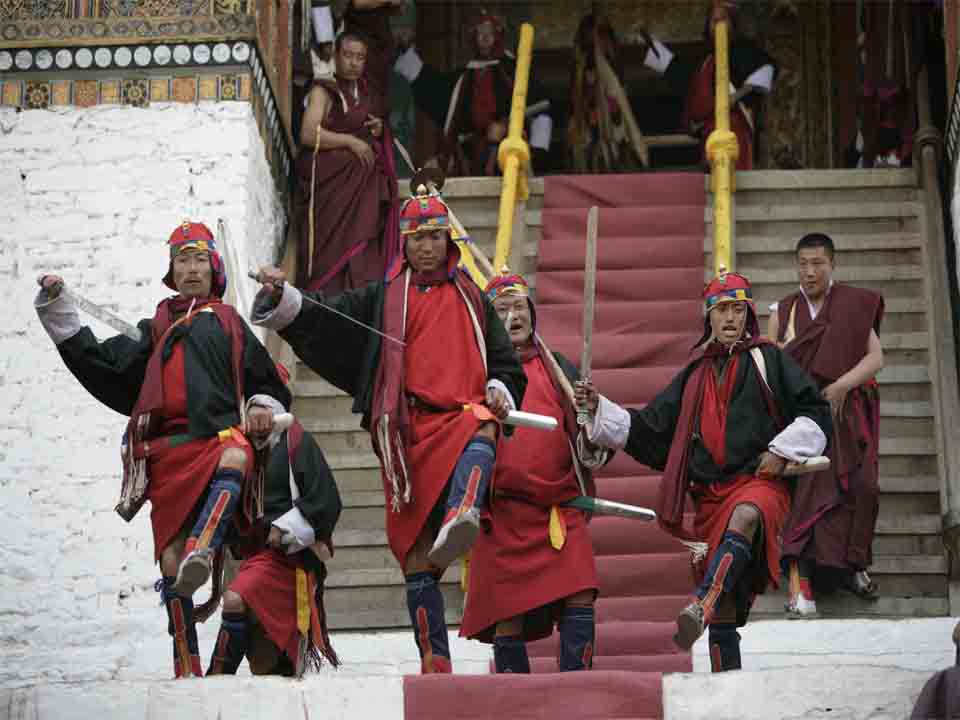
Seventeen actors dress in their finest combat attire—ghos with wonderful patterns, yellow silk skirts with colored ribbons, and white, blue, and red felt boots—to act out the drama. They are headed by eight generals (Magpon). Heavy metal helmets adorned with flags were another trademark of the Pazaps, who also had gleaming swords at their sides.
Each Pazap performs the Lengmag dance for His Holiness the Je Khenpo in the dzongs’ grand courtyard. After that, the Pazaps exit the dzong in large groups while making grandiose gestures and noises and blowing whistles.
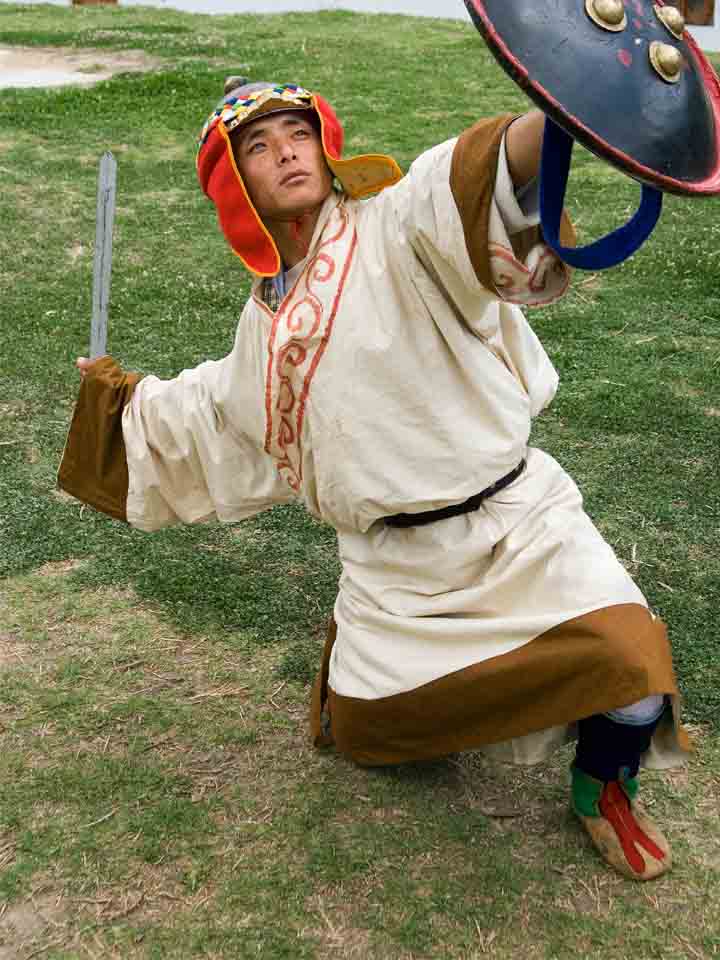
In order to save the sacred artifacts that are being submerged in the river, the generals mount their horses and ride off in a cloud of dust in four different directions.
There is a religious parade outside the dzong complex. It is accompanied by the sounds of trumpets and drums, and it is made up of hundreds of monks and lams wearing the high red hat of the Drukpa Kagyu sect.

Enactment of the Battle at Punakha Drubchen
At the Mochhu riverbank, the parade comes to a halt. During the Luu Chok (religious ceremony for sub-surface spirits), His Holiness the Je Khenpo, clad in a black hat and a great apron decorated with the fearsome head of Mahakala, throws a handful of oranges into the river as a symbol of the precious relic, Rangjung Kharsapani, the self-created image of Chenrezig or Avoleketeshvara.

The Zhabdrung, who His Holiness represents, presided over a similar event here in the 17th century.It is believed that Pazaps have returned victorious after the relic has been symbolically submerged. The day of victory culminates in celebrations in the courtyard of the dzong, where the generals are dragged from their horses and carried up the stairs in jubilation.
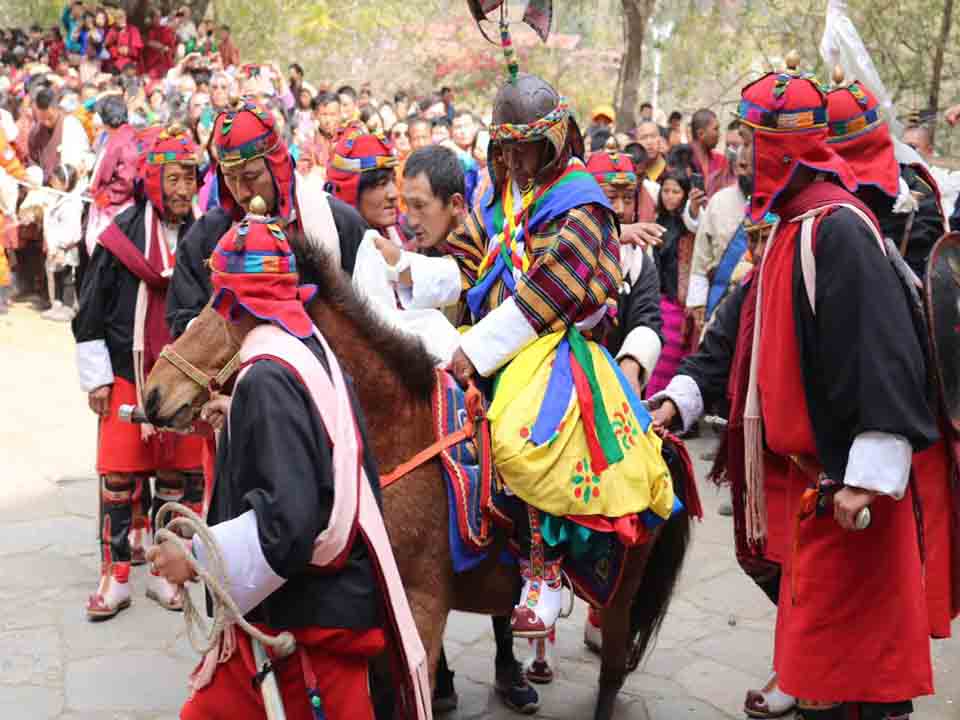
The Zhabdrung originally staged the ritual in 1639 to trick the invading Tibetans into thinking the Rangjung Kharssapani had been dumped into the river. It’s an offering of thanks to all gods (Goenpos) who have defended you from harm.
When the Tibetan realized that the Rangjung Kharsapani, which had been delivered to Bhutan by Zhabdrung Ngawang Namgyel, was lost in the river and could not be recovered, they withdrew from Punakha. Through cunning and forethought, Zhabdrung had triumphed in another battle.
The Punakha Dromche is one of the oldest and most well-attended festivals in Bhutan, attracting thousands of locals and visitors each year.
Book Punakha Drupchen/ Dromche Festival 2024:
Festival Date: 16th- 18th February, 2024
Check out the Punakha Drupchen /Dromche itinerary and tour cost by Clicking here
(Note: The itinerary can be customized as per the guest preference and time availability)

TaggedPazapsPunakha DromchePunakha DrupchenPunakha Festival




